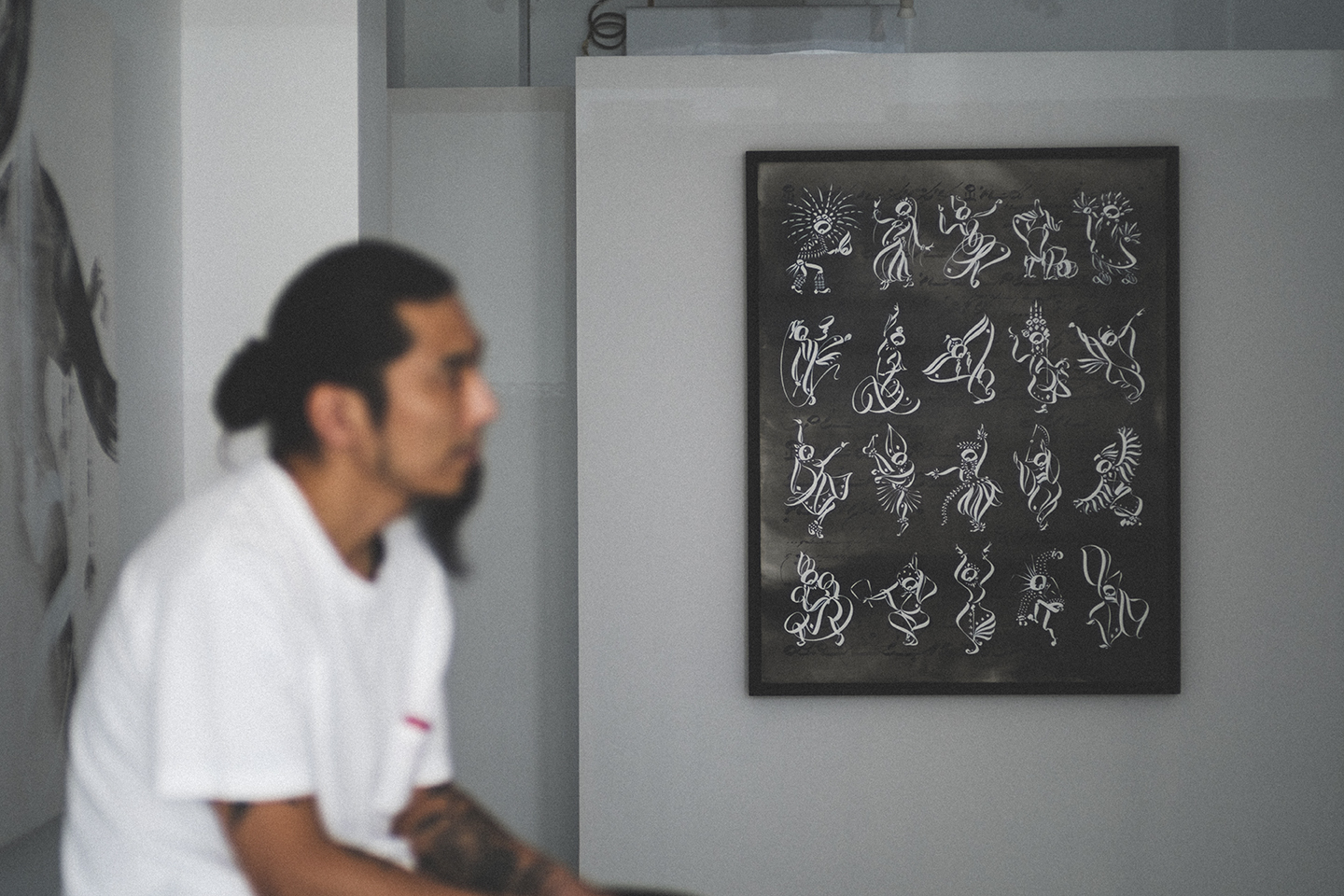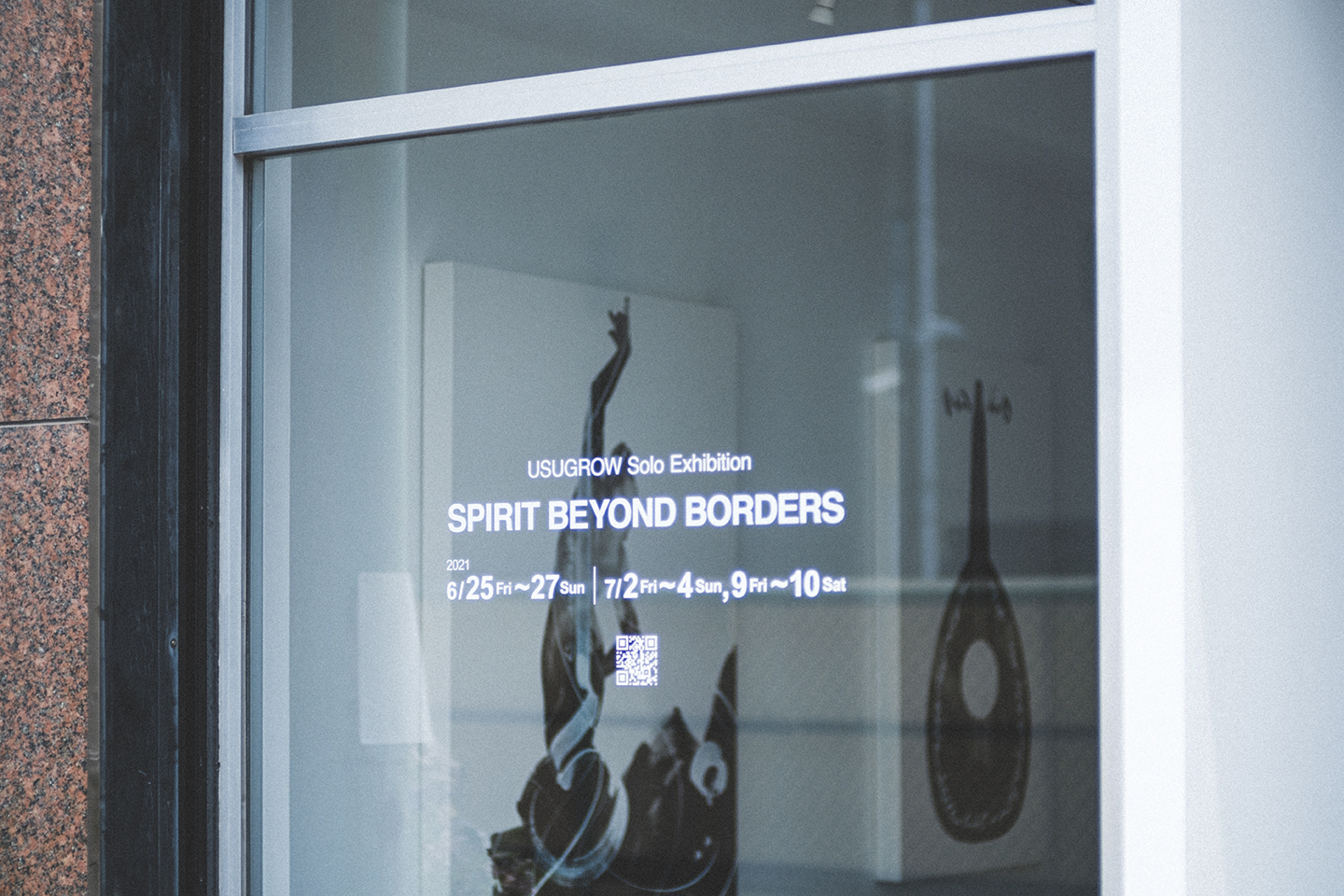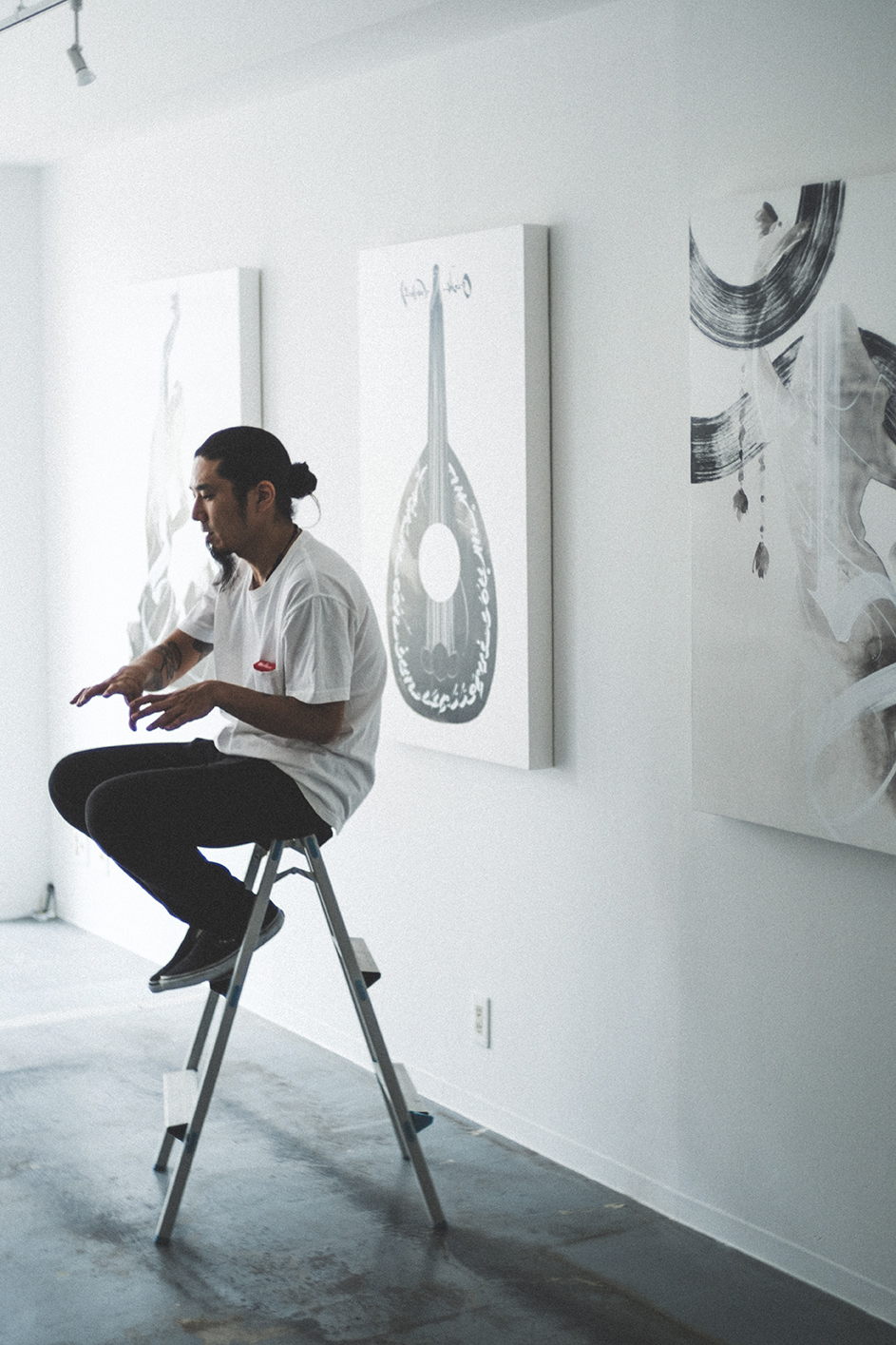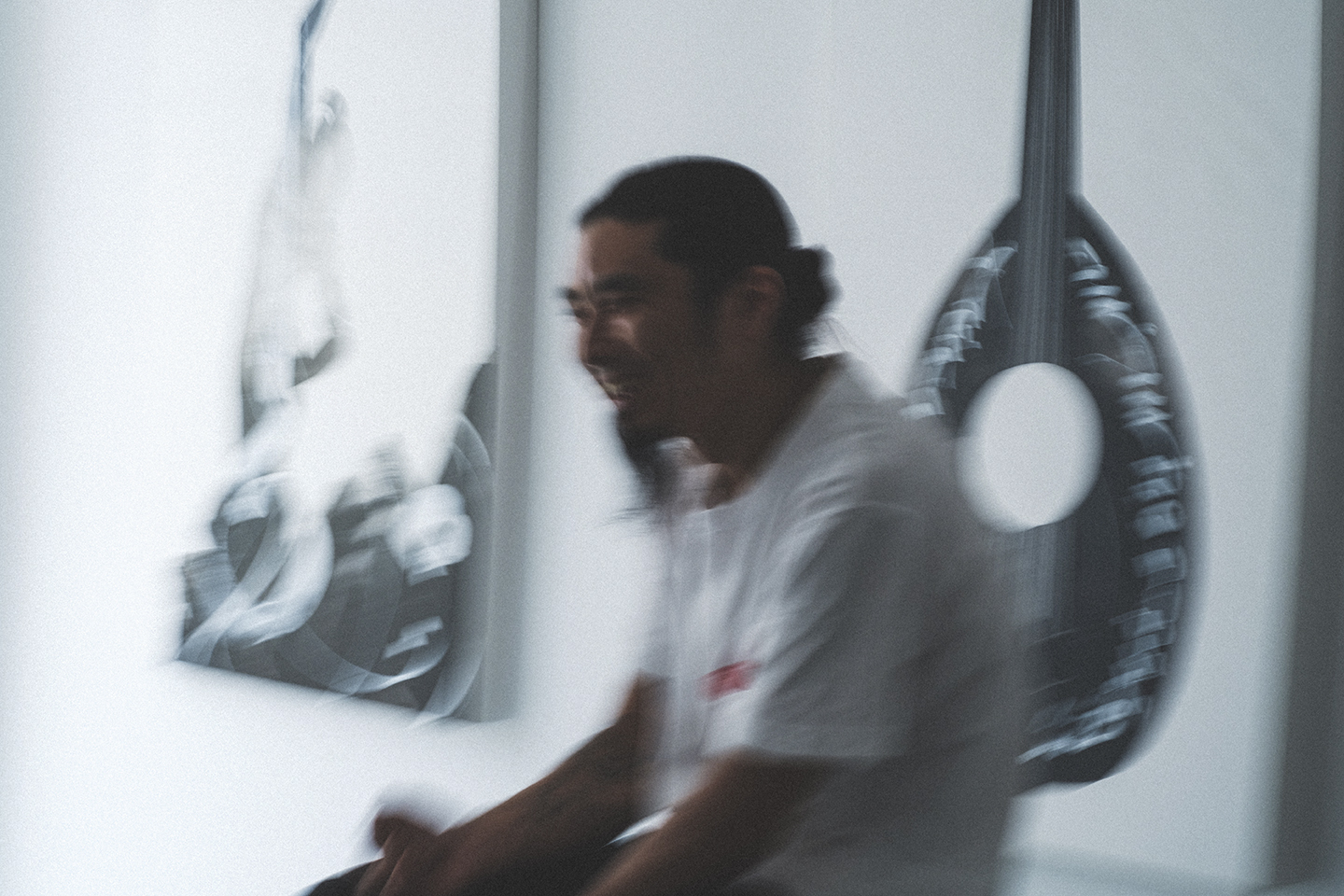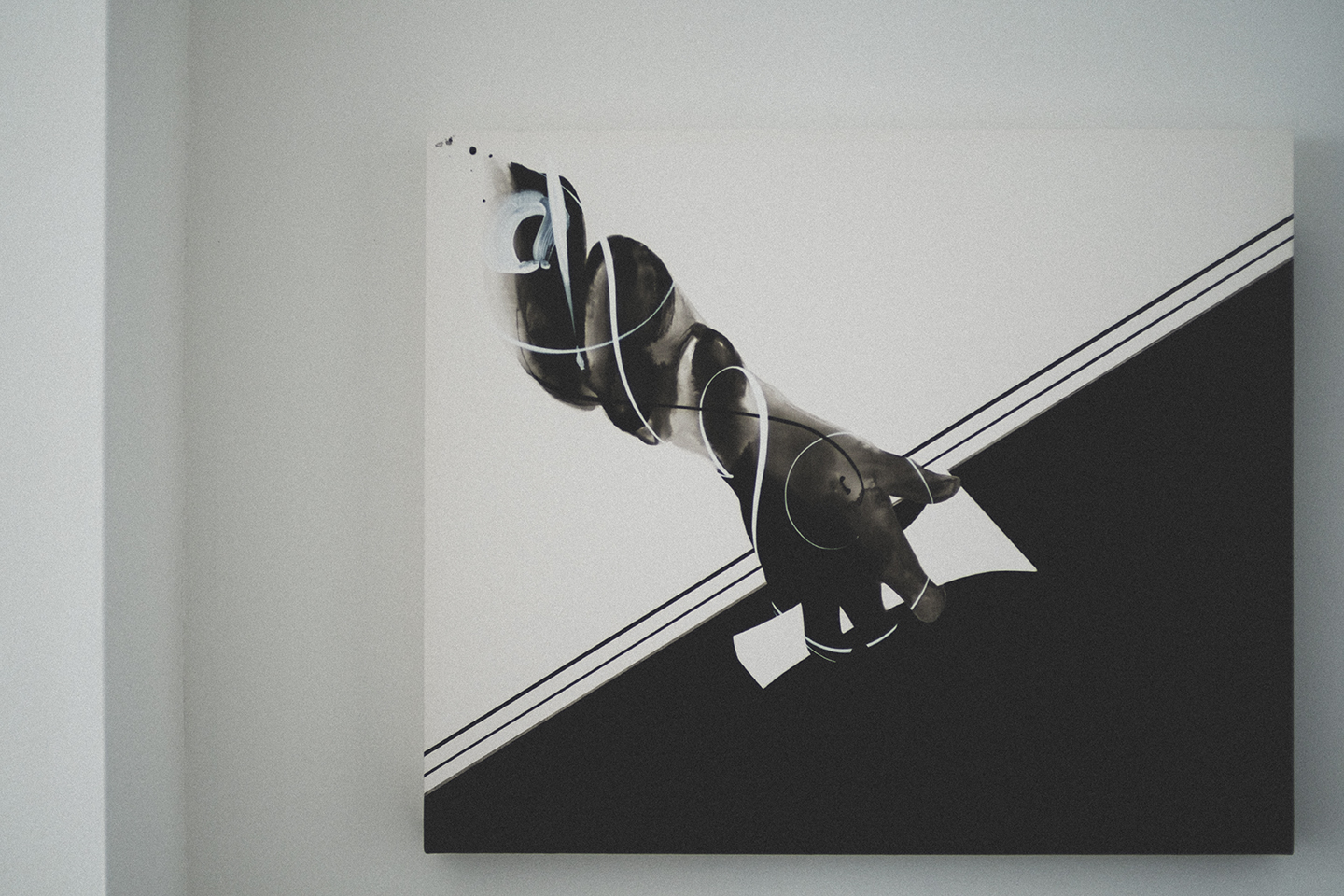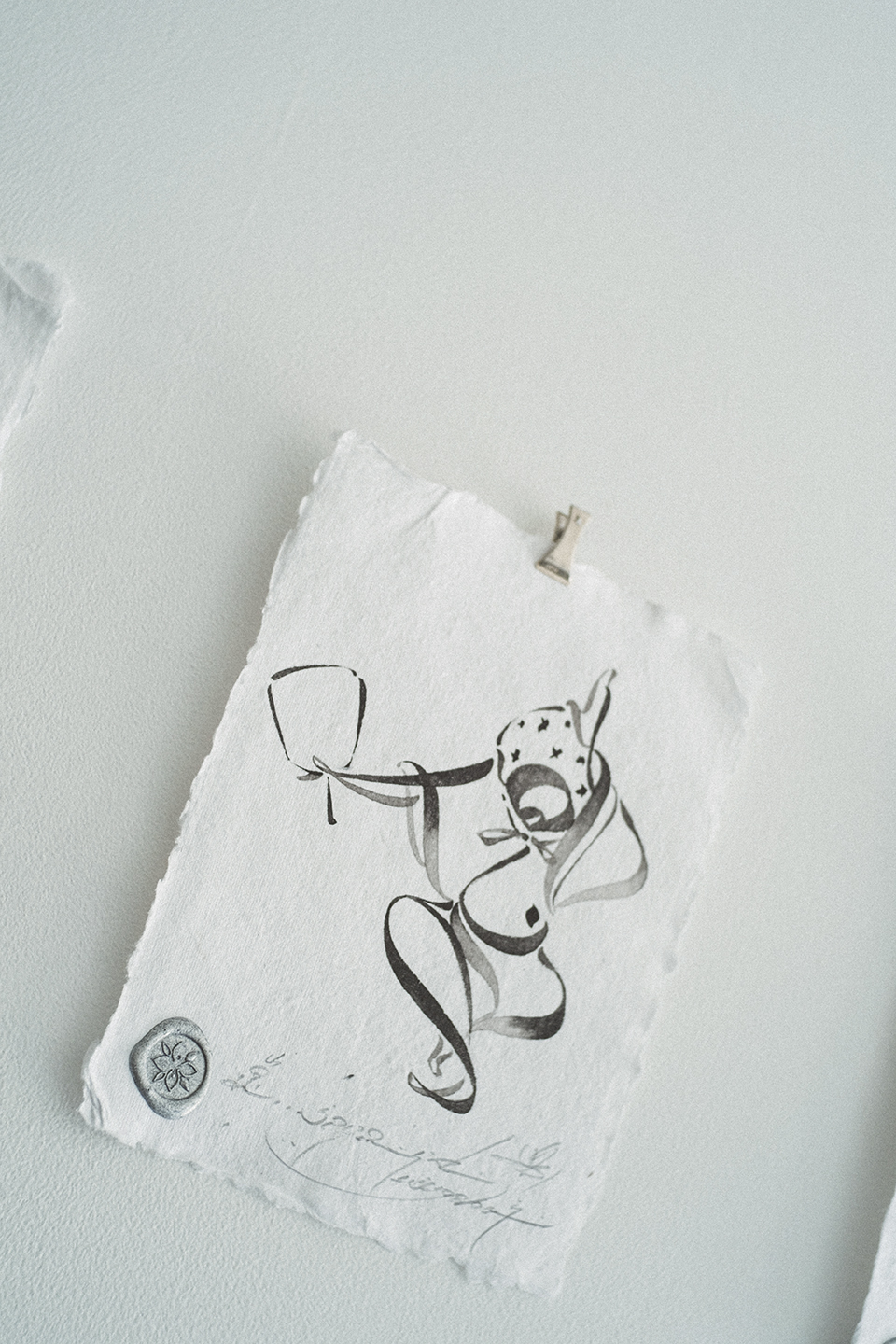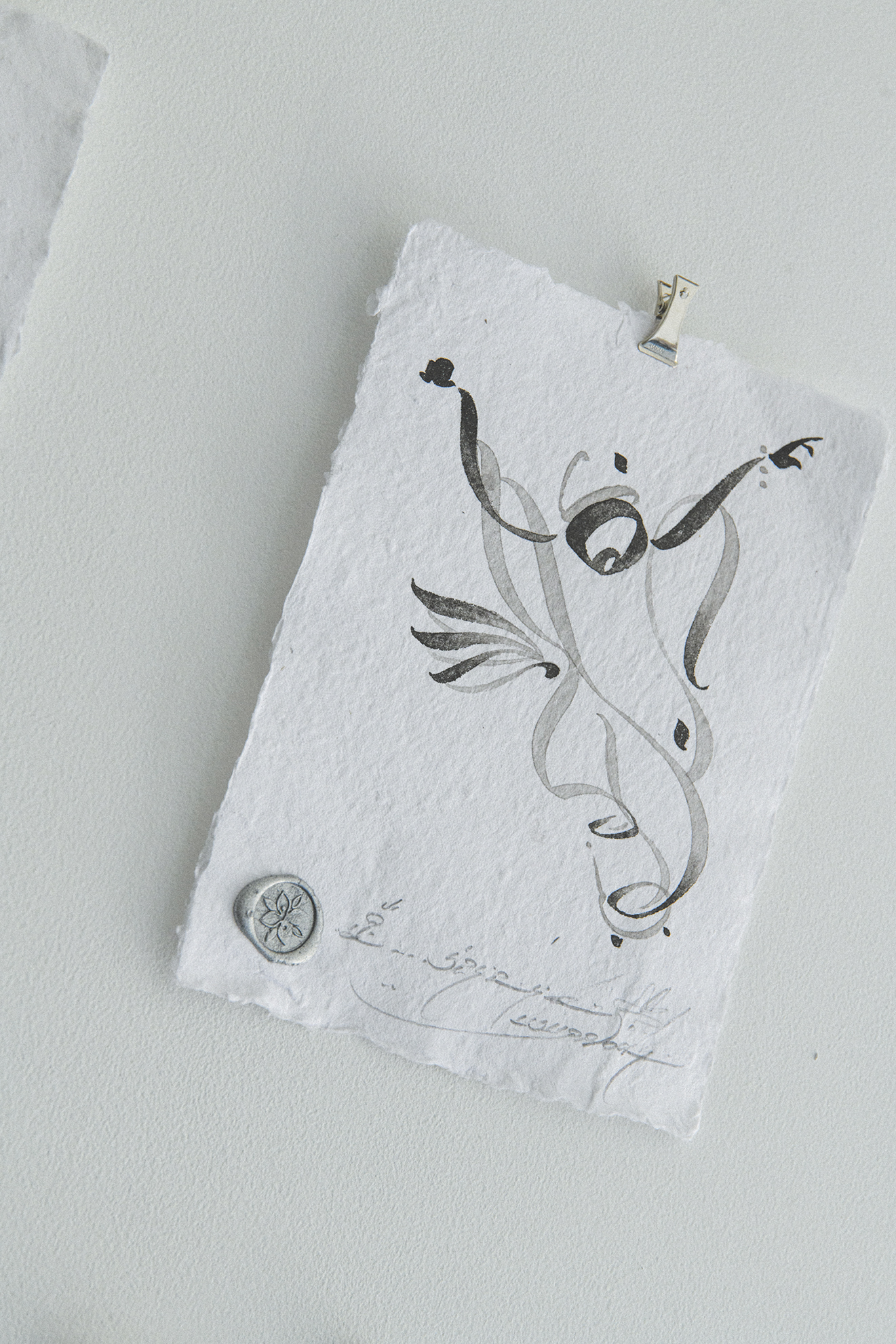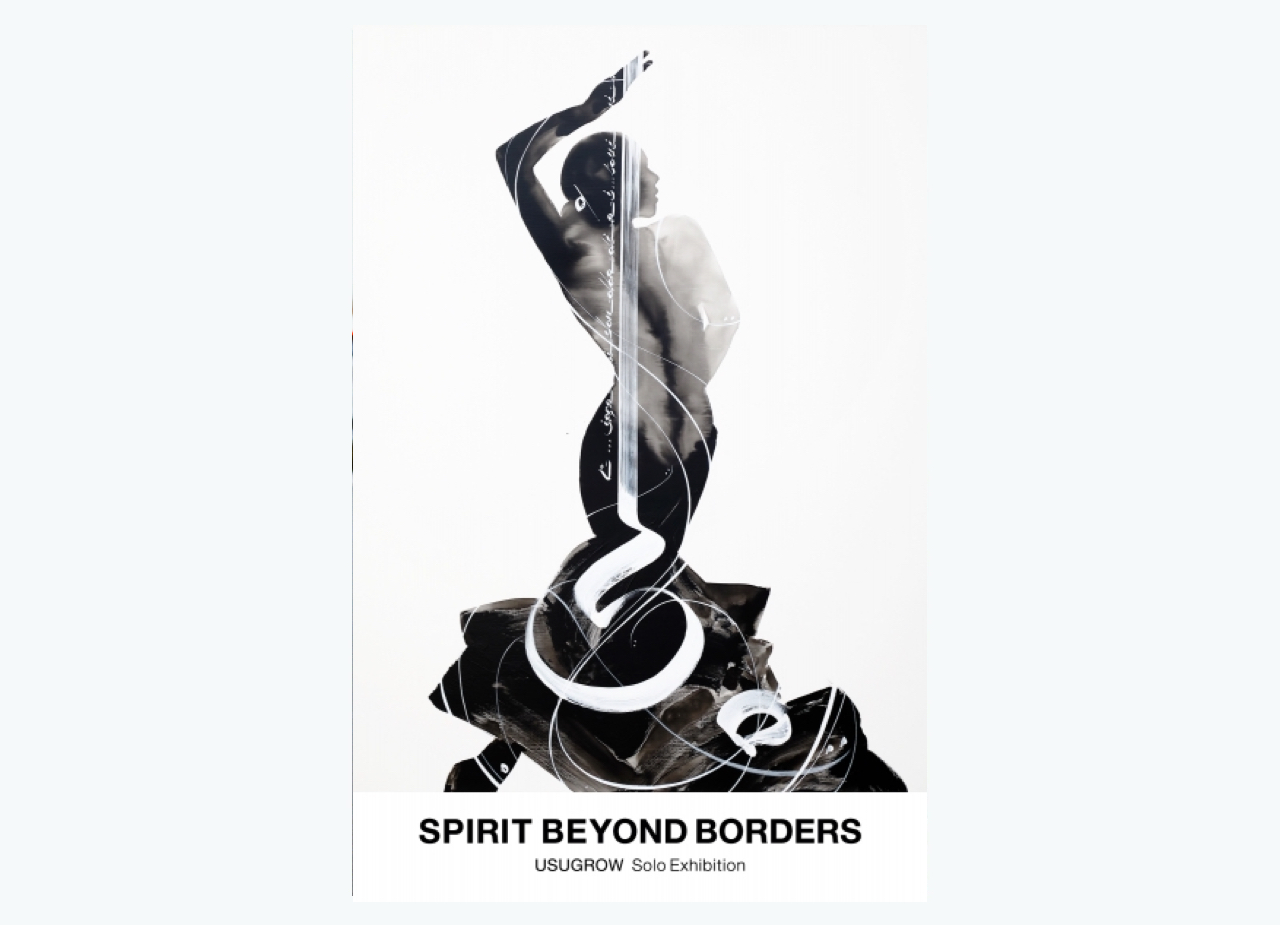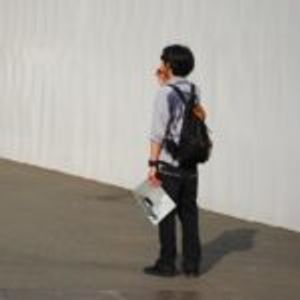With his original “cosmopolitan” calligraphy comprised of fine dots and various alphabets, USUGROW draws a monochrome world. His intricate, beautiful works are beloved overseas, and every time he holds an exhibition, whether it’s in Japan or abroad, it makes a splash.
On June 25, along with artist imaone and architectural designer Ikue Nomura, USUGROW opened SHINTORA PRESS, a multi-purpose space in Minato-ku’s Toranomon, near Kasumigaseki and Shinbashi. As part of the grand opening, USUGROW will hold a solo exhibition in the space. The exhibition is titled SPIRIT BEYOND BORDERS and features a line-up of works with dance as a motif—but why did this theme strike a chord with him? We went to the space before the opening day, and surrounded by his art, we talked to him about the meaning behind his work.
Aiming to be a gallery where people can always drop by and see something interesting
——Congratulations on the opening. When did you originally get the idea for SHINTORA PRESS?
USUGROW: Thank you. Imaone’s office is on the upper floor of this building, and since the first floor was vacant, we started talking about how we could find a way to use it if we kept it clean. About three years later, the gallery was completed, although we hadn’t originally planned for it.
——Until 2017, you were running HHHgallery in Katsushika with HAROSHI and others, right?
USUGROW: Right. I’d never had my own solo exhibition at HHHgallery, but I used to organize other artists’ solo and group exhibitions. I’d like to bring the best parts of that gallery to this space. When we started HHHgallery, there were lots of solo exhibitions being held at clothing stores and small galleries, and there were a lot of opening parties that served alcohol. But at HHHgallery, we didn’t have those kinds of parties. We were only open on weekends during the day, so even people with kids could come visit and relax. I liked the vibe of being laidback and opening from noon, so I personally would like to carry that over to SHINTORA PRESS.
——Lively opening parties are fun too, but I liked the atmosphere of HHHgallery as well.
USUGROW: I like the atmosphere of parties that are overflowing with people, and if they’re serving alcohol, I want to drink it. (laughs) But I’d like to do something different from that. Isn’t it nice to have a space where even if there aren’t many people there, there’s something interesting going on?
——In the future, do you plan to regularly have solo or group exhibitions by artists you’re interested in?
USUGROW: It’s not like we can rent the space to just anyone because they’re unveiling their work, holding an exhibition, or having a film screening. But aside from the exhibitions we organize, it’d be nice to be able to offer a space where people can show something.
——I also like the atmosphere of this space. It’s located in the backstreets of a new part of town called the “Shintora area,” right nearby traditional kissaten [Japanese-style coffee shop] and barbershops.
USUGROW: I mean, I was okay with it being anywhere. (laughs) If you have a place where you can introduce something good, people will come. Places like Harajuku and Shibuya already have their own charm, so I wanted to create an atmosphere that was different from those kinds of places. There’s a movement happening right now—sort of like an art boom—which in itself is not a bad thing at all, and the artists themselves are probably working with that in mind. But I also want to introduce interesting people who aren’t concerned with that art scene or art business.
——In this past year or so with the coronavirus, there have been many online exhibitions. But to the extent possible, you were holding in-person exhibitions, right?
USUGROW: To be honest, either way of doing it is fine. But people who see it on their screens and want to see more will probably come to see it in person. So, it’s better to have a venue where people can see the art in real life, and I’d like to continue to value that kind of space. I would never tell someone that they have to see a work in person, but there are probably a lot of things you won’t be able to feel unless you see it with your own eyes. I think there’s something that you can only see by seeing it in person.
——There was definitely a different impact between when I saw the Instagram announcement for this exhibition versus looking at it now. I can see the works more in detail, and it’s like that feeling of tension comes through.
USUGROW: It’s best to see it in person. However, I always want to be open, so I don’t have the thought that I’ll only show people who come to the venue my work, or that I won’t upload it on social media.
Primitive dances and the spread of culture
——This solo exhibition, SPIRIT BEYOND BORDERS, is being held as the opening of SHINTORA PRESS. You’re displaying pieces that feature dance as a motif, which is a motif you started working with 7 years ago, right?
USUGROW: A flamenco piece inspired me to start drawing things that were different from my past illustrations. I’d been thinking that I wanted to get everything together for an exhibition, but then it took a bit of time, which is why it’s out now.
——I’d seen several works that use dance as a motif, but it was a bit unexpected that dance became the theme of this solo exhibition.
USUGROW: I was familiar with festival dances, such as my hometown of Miharu (Fukushima Prefecture)’s Hyottoko Odori, or the Awa Odori. But when I thought about it more deeply, I realized that dance was this incredible thing, so I dug deeper. I like music, and folk music, so I was simultaneously exposed to a lot of that, and everything came together.
——There aren’t any works that use pointillism in this exhibition.
USUGROW: Not this time. But it’s not like I’ve become bored or don’t draw like that anymore. I’m not signed to any gallery, so I want to keep drawing what I want, how I want. But when you’ve been drawing for over twenty years, every time you overcome your own hurdles, the next hurdle becomes even higher, so it ends up taking longer and longer. So, I’d like to continue working at my own pace.
——So it’s basically a new challenge?
USUGROW: I think anyone would get a bit stuck or stagnant if they kept doing the same thing for a long time. So if you’re just going to be at your desk wondering, “What should I do?”, then it’s more interesting to keep trying other ideas that are on your mind and keep it moving. Plus, you can apply whatever you discover there to the methods you’ve been using. I want to keep doing whatever I think of.
——With these works, where you depict all kinds of dances, the cosmopolitan “i” is personified, right?
USUGROW: That’s right. I made the dot of the “i” into a person’s head. “I” means me, and everything important in life, like “identity” and “independent,” begins with “i,” so I thought “i” was nice. Plus, it could be interpreted as “ai” [“love” in Japanese].
——What did you think after drawing everything?
USUGROW: There’s a flow within the human body, but many people have forgotten that intrinsic part of us, so I wanted to draw in a way where you could understand this visually. On top of that, when I was digging into the culture of dance and music, I noticed something. I realized that one ethnic group’s dance is introduced to another place and transforms, and then that’s introduced somewhere else and transforms again, and that’s how it circulates. I was reminded that culture keeps spreading, and even if a country or ethnic group dies out, the culture that was born there lives on elsewhere. I sort of knew that, but isn’t that an amazing connection? And it just so happens to be in sync with our current situation.
——What do you mean by our current situation?
USUGROW: I feel like in the past few years, the borders have become even stricter than before. Entering the country has become a hassle, sending packages requires more and more paperwork, and tariffs are expensive. Starting with those familiar experiences, I feel like we have more problems facing our country. Conflicts, immigration issues, and the exploitation of developing countries are all rapidly coming to the surface. Cultures from around the world are spreading via the internet, but in contrast, the invisible walls we call “borders” have somehow become higher. That contrast has become more pronounced, which feels strange. It’s not like I’m trying to call for action, but coincidentally, people all around the world—including myself—have been forced to stay inside due to the coronavirus. So even if it’s just with my thinking, I want to be outward-facing. Maybe there’s part of me that wants to convey that.
——Maybe the spread of ancient dances and the digital spread of culture today are different in form, but things haven’t really changed.
USUGROW: Right. I think things haven’t changed, but we take it so much for granted that we don’t know what it feels like anymore. Apart from just dance— punk, hip-hop, and skateboarding, which I love, are easy examples. Within hardcore punk, there’s Japanese hardcore, a style that’s established worldwide. The hardcore punk style that began in the UK in the 1980s was introduced to Japan. From there, it transformed into a unique style, which spread once again throughout the world. So, a culture that was born in one country was introduced to another country, where it transformed, and that’s how new styles are born in every place.
——So things won’t be contained to just one country.
USUGROW: Even the things we casually enjoy are spreading all over the world, thanks to our powerful and deep instinct to express or try things. That’s an incredibly valuable thing. No matter how tall they make the border [walls], the culture we love will spread, so people shouldn’t underestimate that. Today, our country has all kinds of issues, but that won’t get in the way of the culture we love. And in the same way that dance and music have spread, I think the rich history of culture and the strength of humankind will remain unchanged in this era, too.
※Continues to the last half part 2
USUGROW
USUGROW is an artist who began his career in the early 90s making flyers in the underground punk and hardcore music scene. Since then, he has been involved in album design, art direction, and merchandise for musicians across various genres, and collaborated with skateboarding and fashion brands.
Instagram:@USUGROW
http://USUGROWUSUGROW.com/
■SPIRIT BEYOND BORDERS
Date: ~June 27th, July 2nd-4th, 9th to 10th
Venue: SHINTORA PRESS
Address: Nishi-shinbashi Tachikawa Building Annex 1F, 2-12-7 Nishi-shinbashi, Minato-ku, Tokyo
Time: 14:00〜20:00
Tickets: Free
※Guests with reservations will be given priority for admission. Guests without reservations may be asked to wait depending on how busy it is. To make a reservation, please register using the reservation system, SELECTTYPE.
https://select-type.com/rsv/?id=VezIaGz7KAs&c_id=166193
Photography Tsutomu Yabuuchi(TAKIBI)
Text Shogo Komatsu
Translation Aya Apton

